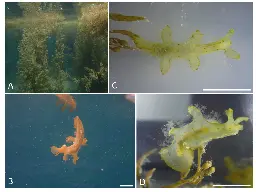
The 3.5 GHz bands have been allocated in the Netherlands
The outcome of the bidding round can be found here: https://open.overheid.nl/documenten/6733d919-3a39-4416-8fc7-52a9e12d7ba7/file
VodafoneZiggo gets 3450 – 3550 MHz
T-Mobile Odido gets 3550 – 3650 MHz
KPN gets 3650 – 3750 MHz
Many antenna towers are already equipped with 3.5 GHz hardware, so 3.5 GHz 5G should be broadly available soon.
This map has some information about the 3.5 GHz capabilities of many of the towers: https://antennekaart.nl/kaart
Appointed! Sorry about the hassle. I also learned about these federated community bugs just now.
This work using high-throughput combinatorial chemistry to find molecules to stop/revert aging is amazing. I have been looking it in the past few days. The authors screened 653,000 different compounds, I am very curious about how expensive this screening was.
I was not aware of DePinho but I am familiar with Schultz's work. I thought that would get a Nobel prize for his work on non-canonical amino acids, but he hasn't yet. I am now placing my bets, Ronald DePinho and Peter G. Schultz will win a Nobel prize.
I tried it out and it works well with only SDR++. I have edited my post to correct this, thanks!
Ah!! I over complicated things then. It wouldn't work for me at first and I eventually converged to this apparently sub-optimal configuration. Tomorrow I will check and edit the post accordingly, thank you!
RTL-SDR is compatible with GrapheneOS


EDIT: It was pointed out below by u/lukmly013 that SDR++ supports RTL-SDR directly. I have removed the rtl_sdr driver app and it works.
So, it is as simple as downloading the SDR++ app and enabling the USB-C port. No need to mess around with the driver app and its security settings.
------------------------
This is a PSA as I could not find online whether a GrapheneOS would be able to run an SDR dongle or not.
I was skeptical about this working because GrapheneOS has several hardened security features and does not allow root access. Since the RTL-SDR dongle is a USB device that requires coordination between a "driver" app and second SDR app I wasn't sure if such a configuration would work.
Conclusion: It does work!
I am using a USB-C to USB 3.0 OTG adapter and the rtl-sdr blog v4 dongle with a generic antenna. My phone is a Pixel 7.
The SDR app I have used is SDR++: https://github.com/AlexandreRouma/SDRPlusPlus/
The driver required is "Rtl-sdr driver", available via F-droid: https://f-droid.org/packages/marto.rtl_tcp_andro/
Both of these can be downloaded via Obtainium.
As for the phone settings:
Under "Security" settings, make sure the USB-C port is not set to "Off" or "Charging-Only".
In that same menu, if you see the sub-menu "USB peripherals", make sure that new USB peripherals are allowed. In my case I am almost sure that I had this sub-menu before, but I don't see it anymore.
In the app info menu of the Rtl-sdr driver app (long-click on app icon), toggle to ON the "Exploit protection compatibilit mode"
You should now be able to open the SDR++, click play, and find some bands.
This was enough to get the RTL-SDR to work in my phone.
Hopefully someone else finds this useful.
In order to complete the transition to the era of large-scale integration, silicon photonics will have to overcome several challenges. Here, the authors outline what these challenges are and what it will take to tackle them.
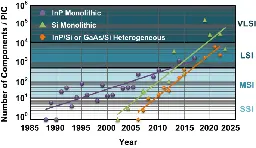
A study demonstrates that the fish Danionella cerebrum is able to discriminate the direction of sound by comparing the relative phase of pressure and particle motion.
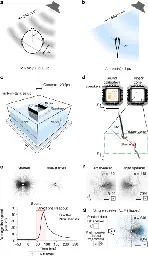
Detecting hallucinations in large language models using semantic entropy
Hallucinations (confabulations) in large language model systems can be tackled by measuring uncertainty about the meanings of generated responses rather than the text itself to improve question-answering accuracy.
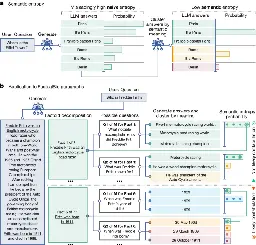
>Abstract > >Large language model (LLM) systems, such as ChatGPT1 or Gemini2, can show impressive reasoning and question-answering capabilities but often ‘hallucinate’ false outputs and unsubstantiated answers3,4. Answering unreliably or without the necessary information prevents adoption in diverse fields, with problems including fabrication of legal precedents5 or untrue facts in news articles6 and even posing a risk to human life in medical domains such as radiology7. Encouraging truthfulness through supervision or reinforcement has been only partially successful8. Researchers need a general method for detecting hallucinations in LLMs that works even with new and unseen questions to which humans might not know the answer. Here we develop new methods grounded in statistics, proposing entropy-based uncertainty estimators for LLMs to detect a subset of hallucinations—confabulations—which are arbitrary and incorrect generations. Our method addresses the fact that one idea can be expressed in many ways by computing uncertainty at the level of meaning rather than specific sequences of words. Our method works across datasets and tasks without a priori knowledge of the task, requires no task-specific data and robustly generalizes to new tasks not seen before. By detecting when a prompt is likely to produce a confabulation, our method helps users understand when they must take extra care with LLMs and opens up new possibilities for using LLMs that are otherwise prevented by their unreliability.
I am not entirely sure if this research article falls within the community's scope, so feel free to remove it if you consider it does not.
The Fantastically Weird World of Photosynthetic Sea Slugs | Michael Middlebrooks | TED

YouTube Video
Click to view this content.
Checking back in. Still not working :(
Publishing in a more prestigious journal usually means that your work will be read by a greater number of people. The journal that a paper is published on carries weight on the CV, and it is a relevant parameter for committees reviewing a grant applicant or when evaluating an academic job applicant.
Someone who is able to fund their own research can get away with publishing to a forum, or to some of the Arxivs without submitting to a journal. But an academic that relies on grants and benefits from collaborations is much more likely to succeed in academia if they publish in academic journals. It is not necessarily that academics want to rely on publishers, but it is often a case of either you accept and adapt to the system or you don't thrive in it.
It would be great to find an alternative that cuts the middle man altogether. It is not a simple matter to get researchers to contribute their high-quality work to a zero-prestige experimental system, nor is it be easy to establish a robust community-driven peer-review system that provides a filtering capacity similar to that of prestigious journals. I do hope some alternative system manages to get traction in the coming years.
The server admin has access to the server infrastructure. They can access the database directly, modify the code that runs lemmy, turn off the site, often has control of the domain name and makes sure it points to the server, etc. The server admin has control over the software that runs the instance and the computer it runs on. They might have an admin account too, but that is not strictly necessary.
With "site admin" I assume that you mean someone with an account that has admin privileges. Such an administrator can access the instance with an account that can see and take action on instance-wide reports, can modify the site's side bars, create emojis, and has other admin privileges. These admin privileges live within the website itself and are determined by lemmy's code. This admin does not automatically have access to the server nor the database.
The structure is shown in the full text:

Thank you for the feedback!
I have been very succesful with indoor peppers. With tomatoes I had too much plant and a few cherry tomatoes (from a supermarket cherry tomato's seed)
There is a bit of humor and a bit of truth. I don't have a garden and so when I was looking into whether it was possible to grow a pumpkin in a pot, most of what I found stated that the pumpkins need a lot of ground to have a strong and healthy root system, and a lot of sun, and so it is not recommended to grow them indoors. I thought that the plant would begin to grow but at some point the pot would not be able to sustain the root system and the plant would die. This has happened to me with many trees that I try to grow indoors - most recently my tamarind trees. They look perfectly healthy and then drop dead. Well, I am not certain of why the trees die but I suspect their roots rot.
But the humor is that I still don't think it is a good idea to grow this plant indoors. It has taken over a lot of space! My original plan was to prune it and keep it small, but I noticed that even the farthest leaves are able to pull moisture from the pot with no problem, and so I am letting the plant grow to see what happens.
The sensors are from AZDelivery, these ones. They are connected to an arduino nano which reads the capacitance values and sends them over to a raspberry pi 5. The raspberry pi 5 is connected to a few other sensors (CO2, particle counter, air humidity and temperature all from Sensirion), and there is a 7-inch raspberry pi display that the pi writes images to. I was making a home air quality station but I decided to place everything around the pumpkin instead for now, to see if I could get something interesting out of that. But, so far most of them have not been practically useful.
I did not know of the term "open washing" before reading this article. Unfortunately it does seem like the pending EU legislation on AI has created a strong incentive for companies to do their best to dilute the term and benefit from the regulations.
There are some paragraphs in the article that illustrate the point nicely:
In 2024, the AI landscape will be shaken up by the EU's AI Act, the world's first comprehensive AI law, with a projected impact on science and society comparable to GDPR. Fostering open source driven innovation is one of the aims of this legislation. This means it will be putting legal weight on the term “open source”, creating only stronger incentives for lobbying operations driven by corporate interests to water down its definition.
[.....] Under the latest version of the Act, providers of AI models “under a free and open licence” are exempted from the requirement to “draw up and keep up-to-date the technical documentation of the model, including its training and testing process and the results of its evaluation, which shall contain, at a minimum, the elements set out in Annex IXa” (Article 52c:1a). Instead, they would face a much vaguer requirement to “draw up and make publicly available a sufficiently detailed summary about the content used for training of the general-purpose AI model according to a template provided by the AI Office” (Article 52c:1d).
If this exemption or one like it stays in place, it will have two important effects: (i) attaining open source status becomes highly attractive to any generative AI provider, as it provides a way to escape some of the most onerous requirements of technical documentation and the attendant scientific and legal scrutiny; (ii) an as-yet unspecified template (and the AI Office managing it) will become the focus of intense lobbying efforts from multiple stakeholders (e.g., [12]). Figuring out what constitutes a “sufficiently detailed summary” will literally become a million dollar question.
Thank you for pointing out Grayjay, I had not heard of it. I will look into it.
Some time last year I learned of an example of such a project (peerreview on GitHub):
The goal of this project was to create an open access "Peer Review" platform:
Peer Review is an open access, reputation based scientific publishing system that has the potential to replace the journal system with a single, community run website. It is free to publish, free to access, and the plan is to support it with donations and (eventually, hopefully) institutional support.
It allows academic authors to submit a draft of a paper for review by peers in their field, and then to publish it for public consumption once they are ready. It allows their peers to exercise post-publish quality control of papers by voting them up or down and posting public responses.
I just looked it up now to see how it is going... And I am a bit saddened to find out that the developer decided to stop. The author has a blog in which he wrote about the project and about why he is not so optimistic about the prospects of crowd sourced peer review anymore: https://www.theroadgoeson.com/crowdsourcing-peer-review-probably-wont-work , and related posts referenced therein.
It is only one opinion, but at least it is the opinion of someone who has thought about this some time and made a real effort towards the goal, so maybe you find some value from his perspective.
Personally, I am still optimistic about this being possible. But that's easy for me to say as I have not invested the effort!
Rethinking open source generative AI: open washing and the EU AI Act
Cross-posting to the OpenSource community as I think this topic will also be of interest here.
This is an analysis of how "open" different open source AI systems are. I am also posting the two figures from the paper that summarize this information below.
>ABSTRACT > >The past year has seen a steep rise in generative AI systems that claim to be open. But how open are they really? The question of what counts as open source in generative AI is poised to take on particular importance in light of the upcoming EU AI Act that regulates open source systems differently, creating an urgent need for practical openness assessment. Here we use an evidence-based framework that distinguishes 14 dimensions of openness, from training datasets to scientific and technical documentation and from licensing to access methods. Surveying over 45 generative AI systems (both text and text-to-image), we find that while the term open source is widely used, many models are ‘open weight’ at best and many providers seek to evade scientific, legal and regulatory scrutiny by withholding information on training and fine-tuning data. We argue that openness in generative AI is necessarily composite (consisting of multiple elements) and gradient (coming in degrees), and point out the risk of relying on single features like access or licensing to declare models open or not. Evidence-based openness assessment can help foster a generative AI landscape in which models can be effectively regulated, model providers can be held accountable, scientists can scrutinise generative AI, and end users can make informed decisions.
[!](https://dl.acm.org/cms/attachment/html/10.1145/3630106.3659005/assets/html/images/facct24-120-fig2.jpg)
Figure 2 (click to enlarge): Openness of 40 text generators described as open, with OpenAI’s ChatGPT (bottom) as closed reference point. Every cell records a three-level openness judgement (✓ open, ∼ partial or ✗ closed). The table is sorted by cumulative openness, where ✓ is 1, ∼ is 0.5 and ✗ is 0 points. RL may refer to RLHF or other forms of fine-tuning aimed at fostering instruction-following behaviour. For the latest updates see: https://opening-up-chatgpt.github.io
[!](https://dl.acm.org/cms/attachment/html/10.1145/3630106.3659005/assets/html/images/facct24-120-fig3.jpg)
Figure 3 (click to enlarge): Overview of 6 text-to-image systems described as open, with OpenAI's DALL-E as a reference point. Every cell records a three-level openness judgement (✓ open, ∼ partial or ✗ closed). The table is sorted by cumulative openness, where ✓ is 1, ∼ is 0.5 and ✗ is 0 points.
There is also a related Nature news article: Not all ‘open source’ AI models are actually open: here’s a ranking
PDF Link: https://dl.acm.org/doi/pdf/10.1145/3630106.3659005
>ABSTRACT > >The past year has seen a steep rise in generative AI systems that claim to be open. But how open are they really? The question of what counts as open source in generative AI is poised to take on particular importance in light of the upcoming EU AI Act that regulates open source systems differently, creating an urgent need for practical openness assessment. Here we use an evidence-based framework that distinguishes 14 dimensions of openness, from training datasets to scientific and technical documentation and from licensing to access methods. Surveying over 45 generative AI systems (both text and text-to-image), we find that while the term open source is widely used, many models are ‘open weight’ at best and many providers seek to evade scientific, legal and regulatory scrutiny by withholding information on training and fine-tuning data. We argue that openness in generative AI is necessarily composite (consisting of multiple elements) and gradient (coming in degrees), and point out the risk of relying on single features like access or licensing to declare models open or not. Evidence-based openness assessment can help foster a generative AI landscape in which models can be effectively regulated, model providers can be held accountable, scientists can scrutinise generative AI, and end users can make informed decisions.
[!](https://dl.acm.org/cms/attachment/html/10.1145/3630106.3659005/assets/html/images/facct24-120-fig2.jpg)
Figure 2 (click to enlarge): Openness of 40 text generators described as open, with OpenAI’s ChatGPT (bottom) as closed reference point. Every cell records a three-level openness judgement (✓ open, ∼ partial or ✗ closed). The table is sorted by cumulative openness, where ✓ is 1, ∼ is 0.5 and ✗ is 0 points. RL may refer to RLHF or other forms of fine-tuning aimed at fostering instruction-following behaviour. For the latest updates see: https://opening-up-chatgpt.github.io
[!](https://dl.acm.org/cms/attachment/html/10.1145/3630106.3659005/assets/html/images/facct24-120-fig3.jpg)
Figure 3 (click to enlarge): Overview of 6 text-to-image systems described as open, with OpenAI's DALL-E as a reference point. Every cell records a three-level openness judgement (✓ open, ∼ partial or ✗ closed). The table is sorted by cumulative openness, where ✓ is 1, ∼ is 0.5 and ✗ is 0 points.
There is also a related Nature news article: Not all ‘open source’ AI models are actually open: here’s a ranking
PDF Link: https://dl.acm.org/doi/pdf/10.1145/3630106.3659005
In the case of tempeh keeping the right ambient temperature (~30) and adding a bit of vinegar to the beans is the best way I have experienced to make it grow fast and healthy. The CO2 I only measure to check for stale air. The tempeh fungus breathes in oxygen and exhales CO2, and if you have a lot of tempeh in a small incubator the CO2 can get too high.
In some techniques for mushroom growing, the mycelium is grown inside of a tub. The fungus exhales CO2 into the closed tub and inhibits this high CO2 condition inhibits fruiting. The fruiting stage can be stimulated by using a fan to push out the CO2. In the case of tempeh one can surround the tempeh with fresh air to stimulate the tempeh to produce spores, which can then be ground with white rice to create a powder to inoculate a lot more tempeh.
Yeah, I have three moisture-in-soil sensors inserted around the plant. The idea was to use to them to control the irrigation, but they did not work out.
Hahahaha, woops, I had worse photos but none better 😂
"A pumpkin is not a house plant" they told me...


We are having a pumpking growing competition at work and I live in an apartment, so I'm working with what I have 😆
The plant already produced many male flowers. From what I have read, the male flowers usually come out 10 - 14 days before the female flowers. They open up for a single day and then they close and fall off.
I found out that tey are edible, so I stuffed a few of them with some left overs as a culinary experiment.
And the first female flower has arrived!
Abstract. Insects engage in manifold interactions with bacteria that can shift along the parasitism–mutualism continuum. However, only a small number of ba
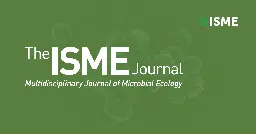
TL;DR: This paper describes the finding that there is a specific type of bacterium (Symbiodolus clandestinus) that lives inside of the tissues of several different insects. This bacterium appears to cause no disease, and it is hypothesized that it provides some useful metabolites that the insects are unable to produce themselves. The bacteria can be passed from the mother directly to her offspring. So, this appears to be a widespread symbiotic relation between a bacterium and insects.
The article goes into a lot more depth and describes some other examples of bacteria <-> insect interactions.
The world should redouble its efforts on the SDGs, not abandon them. Here’s how to progress the United Nations’ agenda towards 2050.

We present genome-wide data from 64 subadults interred in Chichén Itzá around ad 500–900 that gives insight into burial rituals, and shows that their genomic legacy is still present and has adapted to immune challenges post-1492.

From designing studies and translating science to technical services, the work of support staff is highly diverse — and it needs merit systems to match.

Different patterns of brain activity help to distinguish between images recalled from memory and the sight of physical objects.

Steve Gschmeissner images tiny creatures and viruses to show the public an unseen world.

Version update and server upgrade!
The instance has been updated to version 0.19.4!
You can see the official release post and notes here: https://lemmy.ml/post/16585359?scrollToComments=true
Since this update required some manual intervention anyway to update the database version, I took the opportunity to perform some overdue server maintenance and upgrades.
I have migrated the server to a more powerful configuration, and changed the way image files are being stored and served (object storage as opposed to filesystem storage).
I am also aware of some federation issues that have affected this and other instances. I am not sure whether this upgrade will deal with these problems automatically. I will be looking into it and hopefully will implement some solution soon.
Sorry for the downtime experienced in the past few days, but hopefully with the more powerful server the experience will be smoother and will remain so for a while.
For other admins and users interested, this is a bit of information about the server
--------- > >The previous configuration: > >Hosting provider: serverspace.io > >8 GB RAM > >4 Core CPU > >50 Mbps network > >400 GB SSD > >Cost: $55 / month
The 400 GB SSD was being used to store both the server's database and the image files, and this component in isolation had a monthly cost of $36. I have migrated the images to an object storage provider ($6/month for 500 GB), and used the resources previously used for disk space to increase the other parameters. The new configuration is a lot better and less expensive.
---------
>New configuration: > >Hosting provider: serverspace.io > >Object storage provider: contabo.com > >16 GB RAM > >6 core CPU > >50 Mbps network > >100 GB SSD > >500 GB Object storage > >Cost: $47/month
Thanks a lot to the lemmy and pict-rs devs for the hard work they put into developing the infrastructure!
[Done] Migrating images to object storage, images will be inaccessible for a bit
I am performing a migration that moves the images files from disk storage to object storage. During this migration the image back-end needs to be turned off, and so images will not be accessible.
It should still be possible to comment.
I am not sure how long this will take.
This is part of a few optimizations that I plan to do before I upgrade the instance to version 0.19.4.
EDIT: Update, June 17 06:08 UTC
The transfer is working, but, after 12 hours, only ~50 GB have been transferred to Contabo's object storage (rate of about 1.16 MB/s). This is a lot slower than I imagined, and, if this rate continues, it will take about 3 more days to transfer the remaining 300 GB.
I am not sure if this slow rate is to be expected for moving files to object storage, or if something is wrong. If any of you has experience with this I would appreciate some tips! I have also asked in the Matrix chat in case someone there can provide me some feedback as well.
EDIT: Update, June 18, 07:44 UTC
Migration is done!
272.16 GB of image data has been transferred to object storage. This took about 37 hours. This means that transfer occurred at a rate of 2 MB/s. From other admin's experience, this transfer was quite slow. I am making use of Contabo as my object storage provider, and I suspect that the speed of the transfer was limited on their end. Another admin reported that they used backblaze b2 as the object storage provider and they experienced much faster transfers. All of this should have no influence on how the site performs from the end-user's point of view, I am documenting this for other admins who learn from other's experiences by searching through lemmy.
Object storage is a much cheaper way to save files in the cloud. Before this, I have stored the image files into the same SSD disk where the instance lives (rented from serverspace.io). The cost of this disk space goes up as the disk space needs increase. At the current disk size of 400 GB renting that space was costing $36/month and increased $0.9/mo for every 10 GB.
Object storage is a specialized way of saving and serving files from the cloud. Object storage is much cheaper, at €6 for 500 GB (from Contabo), and so it is a much more scalable way of storing the instance's files. The only reason I did not do this earlier was because I was not sure about how to do it and kept pushing it back. But now, it's done! I would recommend other admins to do this as early as possible, as migrating many files is more of a hassle than migrating a few.
Istill need to do a few more tasks (moving the instance to a new server with a smaller disk, upgrading the postgres database to be compatible with 0.19.4, changing the pict-rs database format from sled to postgres, and then upgrading to 0.19.4). But first I will let the instance run for a few days with object storage to make sure nothing is breaking.
Thank you for your patience :D




